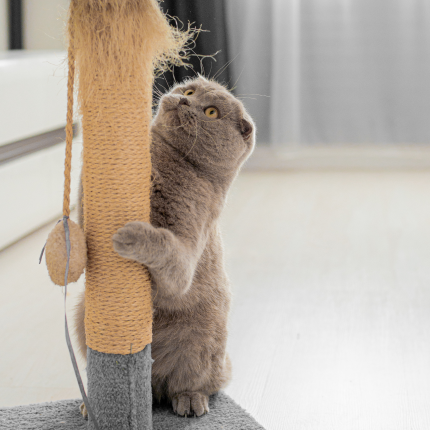Science-Backed Strategies to Stop Your Cat From Scratching Furniture

Cats, our beloved companions, occasionally challenge our patience with behaviors like furniture scratching. While scratching is a natural feline behavior, it can become problematic for caregivers. Fortunately, a recent study sheds light on effective, science-backed strategies to manage scratching behaviors without resorting to extreme measures like declawing or euthanizing.
Led by veterinary researcher Yasemin Salgirli Demirbas from Ankara University in Turkey, the study investigated scratching behaviors in 1,211 cats. Data were collected through an online questionnaire completed by caregivers, focusing on the cats’ daily routines, social interactions, environments, behaviors, and temperaments.
Factors Influencing Scratching Behavior
The study identified several factors influencing scratching behaviors in cats. Environmental factors, specific types of play activities, and increased nocturnal activity were found to contribute to scratching behaviors. However, stress emerged as the primary driver. Cats may scratch more to alleviate stress or mark their territory, especially in response to perceived threats or insecurity.
One significant finding of the study was the impact of small children on cat stress levels. “Children, especially when young, tend to move quickly and unpredictably, which can be challenging for cats,” explained Demirbas. Loud noises, sudden movements, and improper handling by children can cause distress and lead to increased scratching behaviors.
The study highlighted that a cat’s response to children varies based on temperament and past experiences. Nervous cats or those with negative encounters with children may be more susceptible to stress. Conversely, well-socialized cats or those accustomed to diverse environments tend to handle children better.
Effective Management Strategies
To mitigate scratching behaviors, Demirbas recommended several effective strategies:
- Structured Playtime: Regular play sessions that mimic hunting behaviors are crucial for a cat’s mental and physical well-being. Short, repetitive play sessions that promote hunting instincts and satisfaction are recommended.
- Environmental Enrichment: Providing appropriate scratching posts near frequented areas, enriching the environment with toys and elevated observation spots, and utilizing synthetic feline facial pheromones to reduce stress can effectively redirect scratching behaviors.
- Safe Spaces: Designating safe spaces for cats to retreat when overwhelmed by children or other stressors can help manage their stress levels and reduce undesirable behaviors.
Avoiding Punitive Measures
Demirbas cautioned against using punitive measures like positive punishment, which can confuse and distress cats. Instead, caregivers should focus on understanding the emotional motivations behind scratching behaviors and redirecting them to appropriate materials.
Understanding and addressing the underlying causes of scratching behaviors can lead to happier cats and more satisfied caregivers, creating a win-win situation for all involved.

Featured Articles

Polydactyl Cats: Just More Beans to Love
Polydactyl cats have become extremely popular in recent times. As a result, more and more people are interested in learning more about this six-toed cat and want to get one of their own. If you are a cat lover intrigued by polydactyl cats, you have come to the right place….

Greebles and Cats: The Origin and the Meaning
You may have seen an internet sensation concerning cats labeled “greebles.” Feel out of the loop? We’re here to help you. In 2019, Reddit user /user/literallyatree commented on a Reddit post about a cat that looks like it’s trying to slap a ghost. This user commented: “My family calls things…

Why Do Cats Roll Over Into Their Backs But Not Let You Touch Their Bellies?
It’s common knowledge dogs love to have their tummies rubbed when they freely lay down before you and roll onto their backs. But, if you’re also familiar with cats, you know that when they roll onto their backs with their bellies exposed, rubbing the belly will most likely result in…
